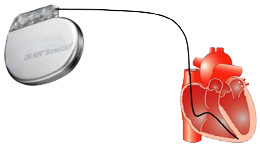
|
ECGbook.com Making Medical Education Free for All |
Upload ECG for Interpretation |

|
ECGbook.com Making Medical Education Free for All |
Upload ECG for Interpretation |

VVI pacemaker




Musculoskeletal Oversensing and VVI Pacemaker
Sources

|
VVI pacemaker
|
|

|
ECG and Musculoskeletal Oversensing
|

|

|
Musculoskeletal Oversensing and VVI Pacemaker
|

|
Sources